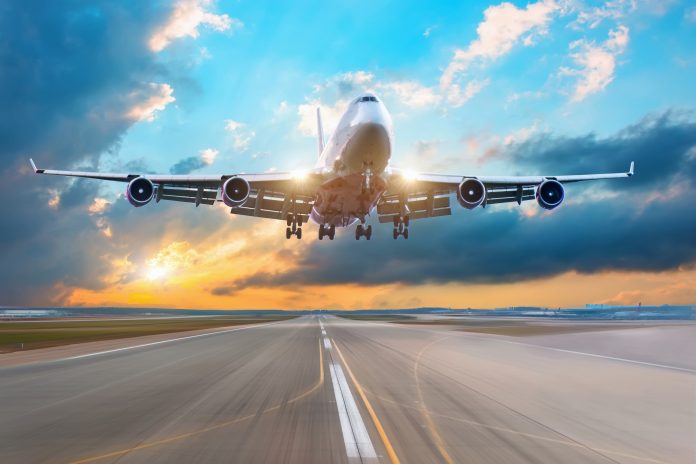Graham Chapman, a sustainable product and business expert and owner of Powerguard, explores how the aviation industry can reduce its carbon emissions
The idea of sustainable aviation is one of many hot topics in the green community at this time, and while some argue that a completely sustainable industry will never be possible; the other side of the argument suggests that with some changes to vital infrastructure big strides can be made in the coming years.
It’s said that air travel is responsible for at least 12% of the global vehicle emissions we produce annually, and according to the latest stats for pre-pandemic air travel, 4.5 billion passengers travelled commercial during 2019: a figure expected to almost double by 2037.
In this piece, we’ll be looking into whether completely sustainable air travel is a possibility or just a pipe dream.
What you need to know
A few years back, environmental campaigner Greta Thunberg drew attention to the harmful impact of aviation by snubbing commercial aircraft in favour of sailing from Portugal to the US instead.
This incident prompted a phenomenon called the “Greta Effect”, which saw a drop in travellers in airports across Europe, as travellers began to appreciate the harmful impact of air travel.
Of course, that’s not to say that travellers shouldn’t be able to meet family and friends abroad, or experience holidays and business travel in distant lands. What it does mean, however, is that we must really begin to consider how we can place these luxuries in the frame of sustainability.
How sustainable technology is developing
Developing technologies in the aviation industry are coming to the fore which are designed to decrease the impact of the burning of fossil fuels. In fact, SETIS state that the implementation of sustainable aircraft fuel will be key when it comes to “greening the skies”.
However, as things stand there are only five global airports that have access to reliable biofuel:
- Bergen Airport, Norway
- Oslo Airport, Norway
- Brisbane Airport, Australia
- LAX, United States
- Stockholm Arlanda Airport, Sweden
Experts believe that this kind of alternative fuel may be able to slash the carbon footprints of airlines by up to 80%.
So, you may be wondering why biofuel isn’t used by every airline in the world? Well, here’s the sticking point, aviation biofuel costs four times as much as typical jet fuel, which has discouraged adoption.
Despite this though, some airlines have pushed forward with biofuel implementation. For example, Scandinavian Airlines vowed to fuel all domestic flights – around 17% of their total fuel use – with biofuel by 2030.
Are airlines adapting?
If there is any hope to further the evolution of airlines, consumer demand must be able to continue to push the green agenda.
For example, it’s crucial that when you’re booking a trip with a commercial airline, you think about which airlines are adapting to the climate crises. This could be anything from blending standard fuels with biofuels, or airlines that are introducing new fuel-efficient aircraft.
The low-cost airline JetBlue, based in the US, in 2020 became the first American airline to become completely carbon neutral.
Also announced in 2020, Scandinavian Airlines promised to entirely upgrade their fleet with fuel-efficient aircraft, which are designed to significantly reduce carbon emissions.
Emissions
Balancing emissions, or offsetting as it is better known, is the idea of reducing the impact of air travel by undertaking individual actions before and after a flight.
Although most major airlines will be investing some of their profits into renewable schemes, such as reforestation or into energy ventures, some companies have gone even further still.
These airlines now give their customers the chance to offset emissions during the booking process. A good example of this is Air New Zealand who now has more than 15,000 offset tickets booked each month.
In fact, in 2020 Air New Zealand announced that passengers choosing to partially or completely offset their journey had offset 92,000 tonnes of CO2, compared to 63,000 the year prior.
What can passengers do to help?
- If your airline offers an offset scheme, you’ll be able to opt into this when booking your ticket. When you choose to buy carbon credits from Air New Zealand for instance, all the cash from the scheme is donated to FlyNeutral, which invests funds into green causes across the world.
- Pack only the essentials that you’ll need. Although excess baggage may seem insignificant, if every passenger did the same, the plane would require more fuel to run to compensate for the drag caused by the extra weight.
- Over 20% of the emissions every aircraft produce does so during take-off and landing, so where possible it’s always the best idea to fly direct.
Cutting waste
The footprint created by domestic and international air travel – besides the fuel emissions – also includes food waste, plastic packaging and other items that passengers carry on board.
This plays an often-overlooked role in the aviation industry’s influence on the environment.
In fact, it was revealed that Aussie brand Qantas produces over 33,000 tonnes of waste each year during flights. This statistic is the reason why the company has promised to cut waste by 75% by 2022, which means having to remove over 100 million everyday plastic items from their flights.
What can passengers do to help?
- Bring along your own headphones and blankets, and any food items you’re allowed to bring on board should be stored in recyclable packaging or reusable plastic containers.
- Fill a clear BPA-free water bottle before boarding to reduce the reliance on plastic cups and bottles.
- Bring along your own portable utensil kit – doing so means you don’t need single-use cutlery for every meal.
Takeaways
At the outset of this piece, we set out to explore what the future may hold for the idea of sustainable aviation. As things stand, commercial airlines are focusing on picking up the slack after being hit by the global pandemic. However, as we’ve discovered there are several promising developments on the horizon once the recovery is underway.
While completely sustainable aviation may never be possible, with increasing interest in green initiatives and sustainable schemes passengers can really push for changes to make air travel better for the environment.











